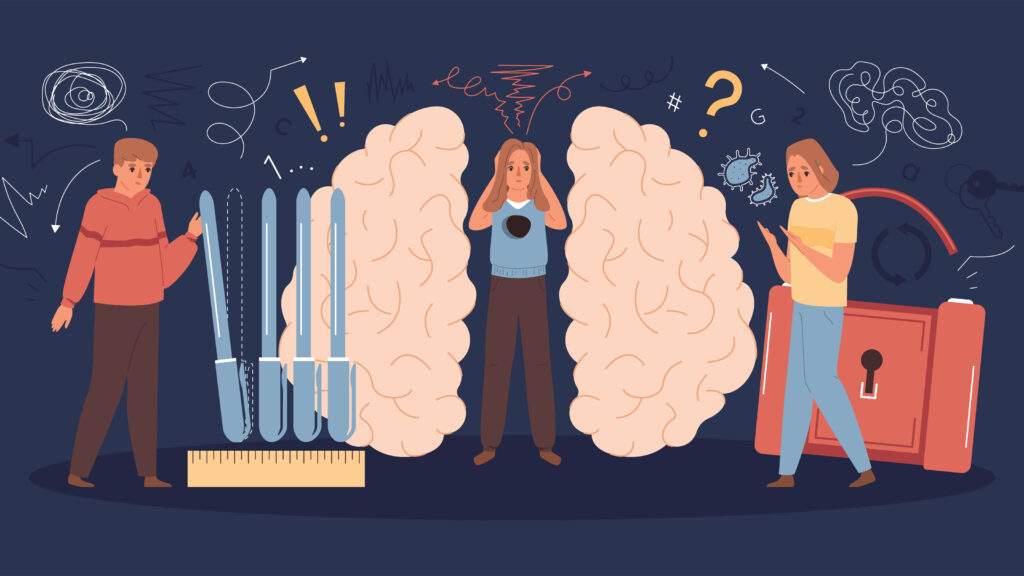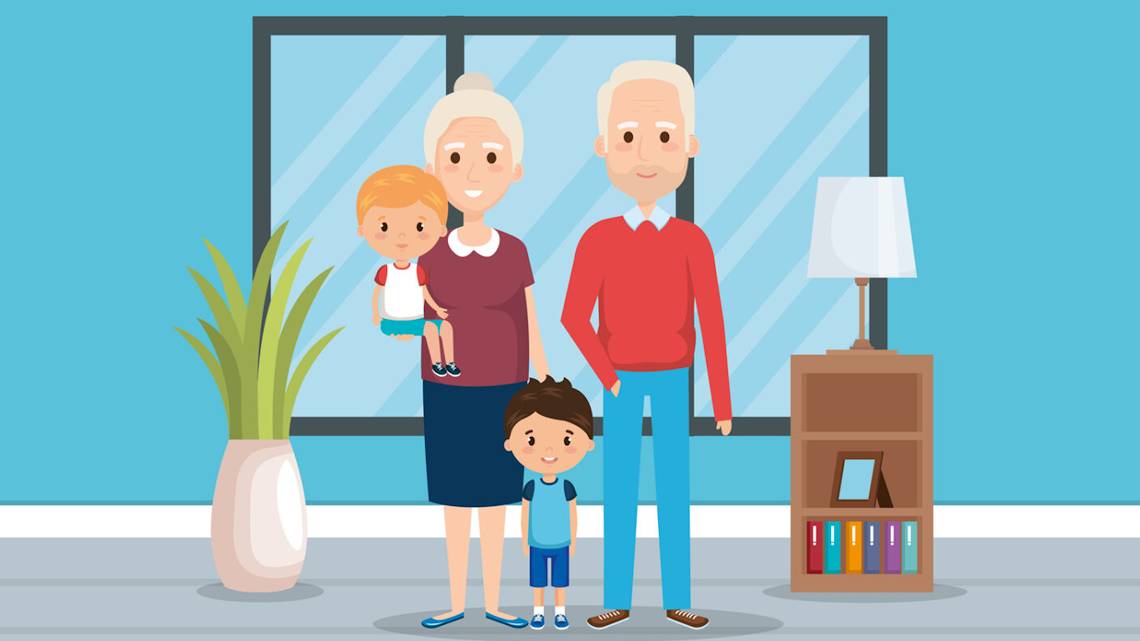
The APA Dictionary of Psychology defines panic as “a sudden, uncontrollable fear reaction that may involve terror, confusion, and irrational behavior, precipitated by a perceived threat.”
In simpler terms, panic is an intense wave of fear that strikes unexpectedly, leaving you feeling confused, overwhelmed, and out of control even when no real danger exists.
What is a panic attack?
A panic attack is a sudden surge of intense fear and apprehension, accompanied by physical symptoms such as heart palpitations, difficulty breathing, chest tightness, choking sensations, sweating, and dizziness. During these brief but overwhelming episodes, it’s common to feel as though you’re losing control, going crazy, or even dying.
Panic disorder is characterized by recurrent and unexpected panic attacks that can disrupt daily life. The persistent worry about when the next attack will strike often leads individuals to avoid situations where they fear one might happen. Over time, this avoidance can take a toll on emotional well-being, relationships, and daily functioning.
Panic attacks can negatively impact mental health and overall well-being. They often increase anxiety, cause avoidance of certain situations, and may lead to isolation or depression. Ongoing episodes can disturb sleep and lower quality of life, affecting daily routines, relationships, and emotional balance.
Symptoms of Panic Attack
A panic attack is the body’s intense fight-or-flight response, triggered even when no actual threat exists. Because the fear comes from within, there is no external danger to escape from making the experience feel inescapable.
When the brain perceives extreme stress or danger, it reacts instantly, bypassing rational decision-making. Your body enters a heightened state, releasing a surge of adrenaline to prepare for action. Your heart pounds, your breathing becomes rapid, and your muscles tense as if bracing for impact. Time may seem to slow down, and your senses become hyper-aware, making everything feel unreal or distorted.
Your mind races, struggling to process the sensations flooding in. Dizziness, chest tightness, trembling, nausea, and an overwhelming sense of impending doom are all common. Despite the lack of danger, the body refuses to calm down, intensifying the distress. This cycle reinforces the panic, making it feel uncontrollable.
While panic attacks are terrifying, they are temporary. Reminding yourself that they are a misfire of the nervous system not a sign of actual harm can help reduce their intensity.

Types of Panic Attacks
Not all panic attacks look the same. Recognizing the different types can help individuals understand their experiences and seek the right support.
Unexpected Panic Attacks
These occur without warning, striking out of the blue with intense fear. You may experience a racing heart, shortness of breath, trembling, and sweating. Although they usually peak within minutes, they can leave you feeling shaken, exhausted, and afraid of another attack.
Situational Panic Attacks
These are triggered by specific situations or environments that feel threatening, such as crowded spaces, public speaking, or flying. The attack typically subsides once you leave the situation, but while you’re in it, the fear and physical symptoms can feel unbearable.
Anticipatory Panic Attacks
In these cases, anxiety builds up long before an event, sometimes for hours or days. Your mind starts imagining worst-case scenarios, making the upcoming situation feel even more terrifying. The physical symptoms mirror those of a full-blown panic attack.
Limited-Symptom Panic Attacks
These involve fewer and milder symptoms than full-scale panic attacks. You might notice slight palpitations, dizziness, or a vague sense of unease. Because these symptoms are subtle, they are often mistaken for normal stress, making them harder to identify as part of panic disorder.
Situationally Predisposed Panic Attacks
These occur more frequently in certain environments—such as your workplace or while driving—without a clear trigger. While the exact cause may not always be obvious, recognizing patterns in where and when they occur can help manage them better.
Nocturnal Panic Attacks
These occur suddenly during sleep, jolting you awake with an intense surge of fear. The abruptness, along with symptoms like a racing heart and sweating, can leave you feeling disoriented and deeply unsettled. Nocturnal panic attacks can also disrupt sleep, leading to exhaustion and heightened anxiety the next day.
Pseudo Panic Attacks
These mimic true panic attacks but are caused by other factors like medical conditions, medication side effects, or substance use. Identifying and addressing the root cause is essential, as treating the underlying issue can significantly reduce these episodes.
Treatment for Panic Disorder
Treatment for panic disorder has come a long way, with two primary approaches proving effective: cognitive–behavioral therapy (CBT) and medications.
Cognitive-Behavioral Therapy (CBT)
Cognitive-Behavioral Therapy (CBT) helps individuals recognize and change fearful thoughts that fuel panic. Through gradual exposure and coping techniques, individuals learn that panic attacks, while distressing, are not dangerous. Over time, this reduces both the frequency and intensity of attacks.
Pharmacotherapy
Selective serotonin reuptake inhibitors (SSRIs) are commonly prescribed for long-term management, while benzodiazepines may be used for immediate relief in severe cases. Since medication effects vary from person to person, treatment plans are often personalized.
Other Approaches
New methods, such as internet-based therapy and brief, intensive CBT sessions, are expanding access to care. These options offer flexibility and allow more people to receive early intervention, which can make a significant difference in long-term recovery.
Understanding panic attacks from their sudden onset and varied forms to their physical and emotional impact can empower individuals to seek help and manage their experiences more effectively. With the right support, coping strategies, and treatment, panic disorder is manageable.
By increasing awareness and reducing stigma, we can encourage more open conversations about mental health. No one should have to navigate panic attacks alone, help is available, and recovery is possible.
Photo Credits:
First image: freepik
Second image: freepik
Citations
Relevance Recovery. (2025, March 24). Different types of panic attacks: A comprehensive guide. https://relevancerecovery.com/blog/types-of-panic-attacks/
Starcevic, V. & University of Sydney, Discipline of Psychological Medicine. (2008). Treatment of panic disorder: recent developments and current status. In Expert Rev. Neurother. (Vol. 8, Issue 8, pp. 1219–1232). Expert Reviews Ltd. https://doi.org/10.1586/14737175.8.8.1219
West, R. (2023). The Anxiety Breakthrough: A Guide to Defeating Anxiety and Panic Attacks. Annus Mirabilis Publishing.

Sakshi
About the author
Sakshi is a clinical psychologist with a deep passion for understanding human behavior, a strong drive for research, and a keen eye for psychological intricacies. Committed to continuous learning, she seeks to explore every facet of psychology, from theory to practice, to better support and empower individuals. With a curiosity that fuels her pursuit of knowledge, she strives to bridge the gap between research and real-world applications, making psychology more accessible and impactful.
Recently Added
Adaptogens are a class of natural herbs, roots, and mushrooms that assist the body in adapting to stressors in the environment. These …
The journey of raising children comes with countless moments where they need our support and guidance. Whether our children are typically developing …
The World Infant, Child and Adolescent Mental Health Day was first initiated to highlight the importance of mental health, starting from the …




